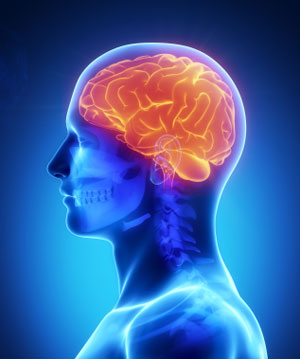 Most people know that exercise is good for the brain, but to know why that's important you need answers to two critical questions:
Most people know that exercise is good for the brain, but to know why that's important you need answers to two critical questions: - What makes the brain succumb to diseases like Alzheimer’s and Parkinson’s?
- What is the best type of exercise to maximize the brain benefits?
Major degenerative diseases in the brain are all caused by one thing –
mitochondrial decay in the brain. Scientists classify degenerative
brain diseases differently based on their symptoms and which region of the brain region they affect, but they all have the same cause.
Why is this a good thing? Because it means that what‘s good for
preventing one disease is also good for preventing others. And because
the primary factors for determining your susceptibility to brain disease
is not genetics.
Mitochondrial decay causes brain disease, and which one you get
depends on where you experience decay. If it dominates in the
hippocampus, you get Alzheimer’s. If it dominates in the substantia
nigra, you get Parkinson’s.
And surprisingly, genetics is not your biggest determining factor.
Even if you have a defective gene, something in the environment has to
activate it. Michael J. Fox’s Parkinson’s was considered genetic until
three other people who worked at the same Canadian TV studio in the
1970s also developed it.
Brain Damage
Your brain uses 20% of the calories you consume. As a result, it has
a large number of mitochondria and experiences a by-product of energy
production called free-radical production. Free-radical injury to the
mitochondria progressively reduces its ability make ATP.
The worst damage to proteins occurs at the inner membrane of the
mitochondrion. In harnessing the light (all food is essentially light
turned into edible form) to give us energy, the mitochondria
inevitability suffer damage by free radicals.
These are the four main processes of mitochondrial decay:
- Decline in energy supply, mostly from free-radical damage to the mitochondrial membrane
- Cumulative free-radical damage to lipids and proteins inside the cell, which turns them rancid
- Chronic inflammation in the brain, caused by free-radical driven overexpression of the inflammatory cascade
- Free-radical damage to mitochondrial DNA, which destroys bits of genetic code
What Can You Do About It?
Protecting your mitochondria is your best chance at preventing brain decay. Here are three main methods you can use:
- Take mitochondrial antioxidants
- Eat aromatic spices
- Manage chronic inflammation
To prevent oxidative stress to mitochondria, which has been
associated with Alzheimer’s and several other diseases, look into
mitochondrial antioxidants. Lipoic acid, glutathione, acetyl-carnitine,
CDP choline, green tea and Vitamins A, C and E can protect your brain.
The list of all mitochondrial antioxidants is too extensive to list
completely.
Aromatic spices such as turmeric, cinnamon, ginger, cloves and red
pepper (cayenne) are all strong anti-inflammatories. And of course,
managing stress plays a large role in managing inflammation. Most
modern stressors don’t require a physical response. Instead of
fight-or-flight, it’s stew-and-chew. We stress over our retirement, our
kids’ schooling, our careers, traffic – none of which requires a
physical response. But the brain doesn’t know this – it interprets
stress as a fight-or-flight event, so we often end up eating more when
stressed. The downside of that is stress hormones that get pumped out
never get used up by physical activity – that’s where exercise comes in!
Keeping your brain buff doesn’t just mean exercising; it means participating in the right type
of exercise, which means more than just walking. Physical activity
boosts a protein (BDNF or brain-derived neurotrophic factor) that
protects neurons from damage. If we have enough BDNF flowing around our
brains, we can handle any amount of stress.
Greenough worked on an experiment in which running rats were compared
to others that were taught complex motor skills, such as walking across
balance beams, unstable objects, and elastic rope ladders. After two
weeks of training, the acrobatic rats had a 35% increase of BDNF in the
cerebellum, whereas running rats had none.
The point is that your workout regimen has to include skill acquisition and aerobic exercise.
Essentially, exercise has to stimulate the senses, engage you and
perhaps be a little bit “scary.” Use simple math problems during
exercises (even goes left, odd goes right, etc.), bounce a tennis ball
around or kick a pebble back and forth while going for a walk, use
random patterns with medicine ball tosses – the ideas are limitless.
Insert some skill acquisition and cognitive processing into exercise and
you’ll greatly enhance the brain benefits, and get the brain one step
closer to buff!
Source Johnathan Ross /Ace

No comments:
Post a Comment